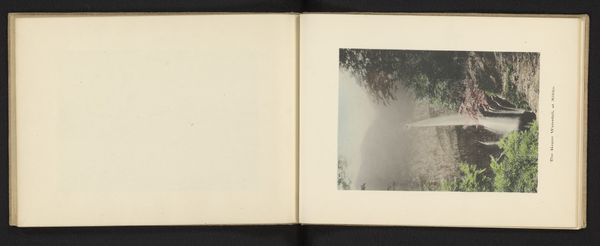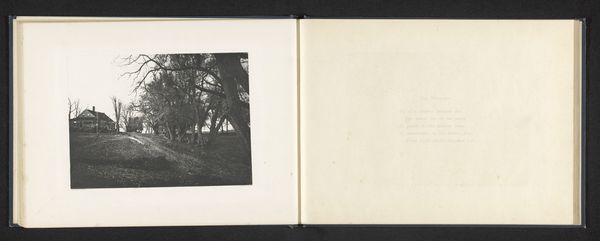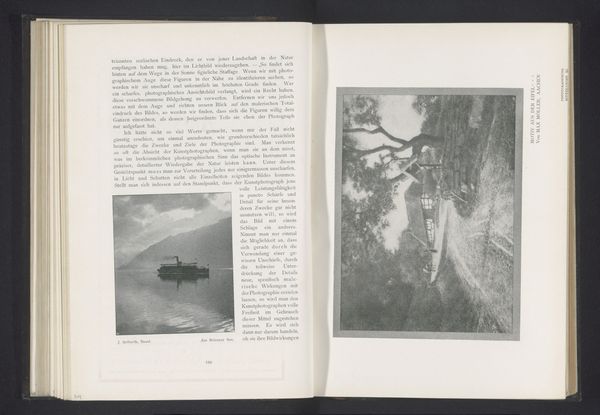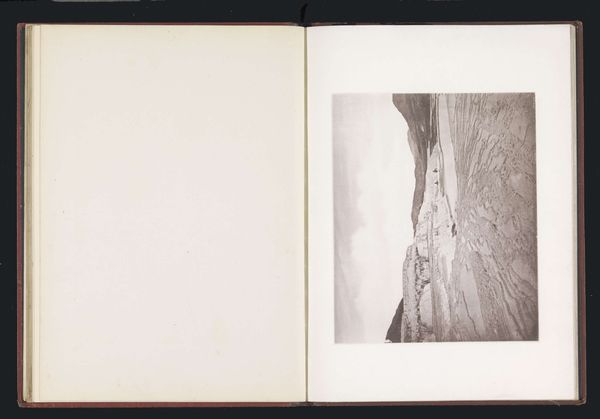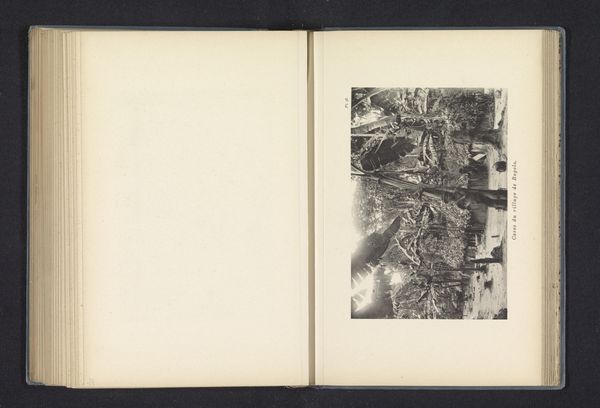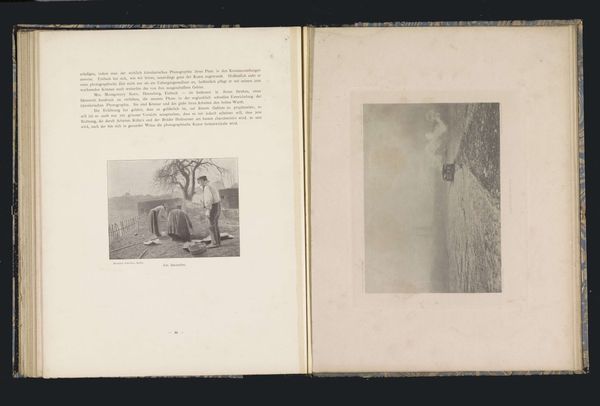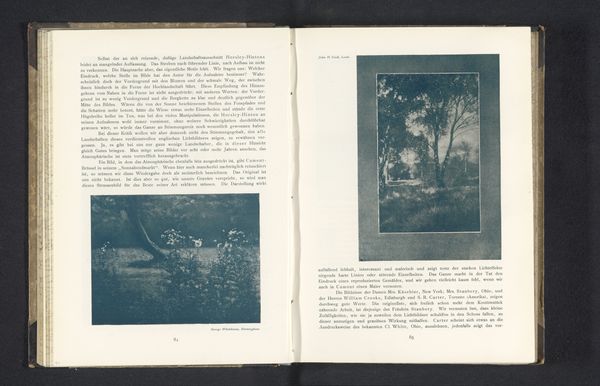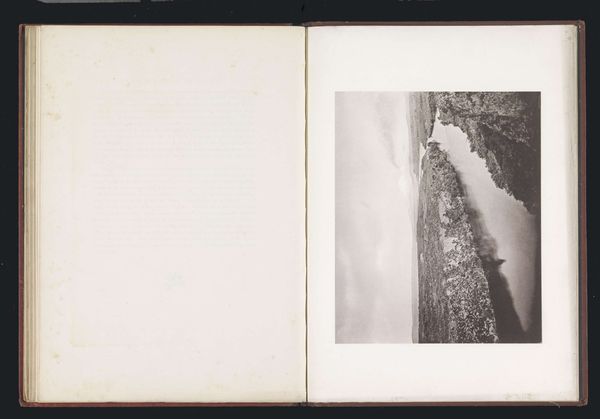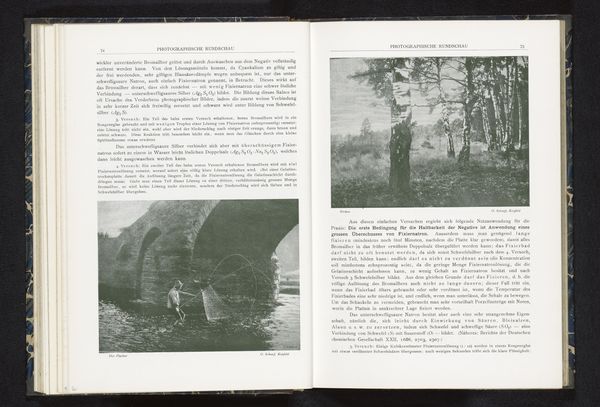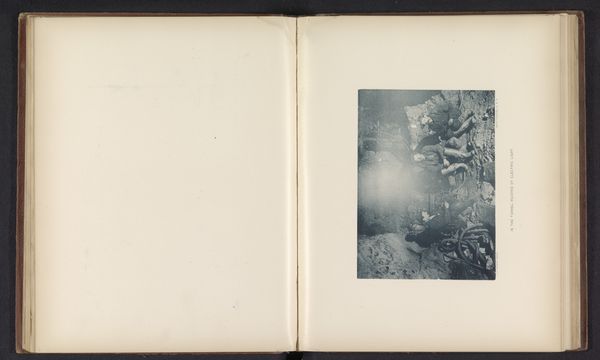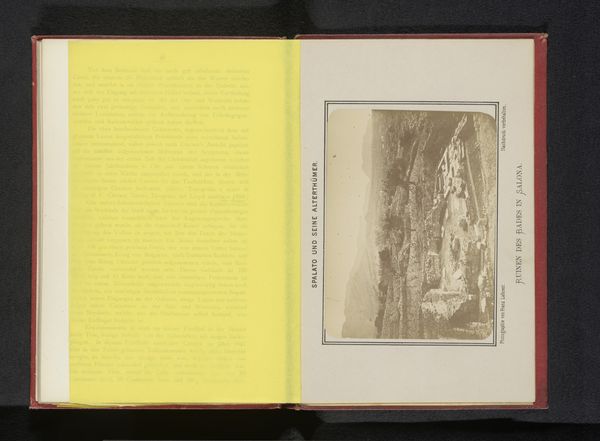
plein-air, photography
#
plein-air
#
landscape
#
photography
#
realism
Dimensions: height 240 mm, width 190 mm
Copyright: Rijks Museum: Open Domain
Curator: What strikes me immediately is the starkness of the central tree against the South African landscape. The artist has captured such a lonely, barren figure. Editor: You're responding to the top image of this 1967 photograph by Willem Jacob van den Berg titled, "Dode bomen in Shewasaulu, Zuid-Afrika", or "Dead Trees in Shewasaulu, South Africa." As you observed, it depicts a rather isolated, bare tree amidst more verdant foliage. Curator: Barren it is. It feels like a potent symbol, almost totemic in its presence. Is it just the eye drawn to scarcity in a place brimming with life? Or are there deeper meanings at play here? Does the dead tree speak of time, mortality, or perhaps even the challenges faced by the land itself? Editor: That central image uses an economy of line that contrasts strongly with the supporting images that depict bushveld more rich with foliage and life. Even though it's a photographic image, that first frame almost has a graphic quality—it uses very flat colour fields, and relies on textural changes rather than value contrast to distinguish figure and ground. I see how that minimalism makes the tree’s “death” more pronounced, while also foregrounding the very abstract arrangement of lines and forms. Curator: Exactly, it almost possesses a ritualistic quality. Given its context—South Africa in the 1960s—does the dead tree serve as a warning, a premonition even? What cultural or political significance might those "dead trees" carry within the specific time and place? Was the artist drawing attention to unseen wounds within a seemingly vibrant setting? Editor: That is something of an overlay, isn't it? Seeing the broader setting makes me wonder about our desire to cast the lone tree as "dead," too. After all, deciduous trees, and dormant growth more generally, carry powerful and positive meanings about resilience and renewal. In a land facing such challenging conditions, doesn’t this simply suggest survival and hidden potential? The smaller frames feel optimistic and bursting with subtle shades of green. Curator: I like your shift to that interpretation—perhaps not so bleak, after all! Editor: It shows the power in artistic expression. The technique may highlight graphic simplicity and design—but that central icon also suggests persistence and adaptation. Curator: Yes, I think we both appreciate now how this image carries multiple readings that deepen its impact, from stark realism to hopeful allegory.
Comments
No comments
Be the first to comment and join the conversation on the ultimate creative platform.
